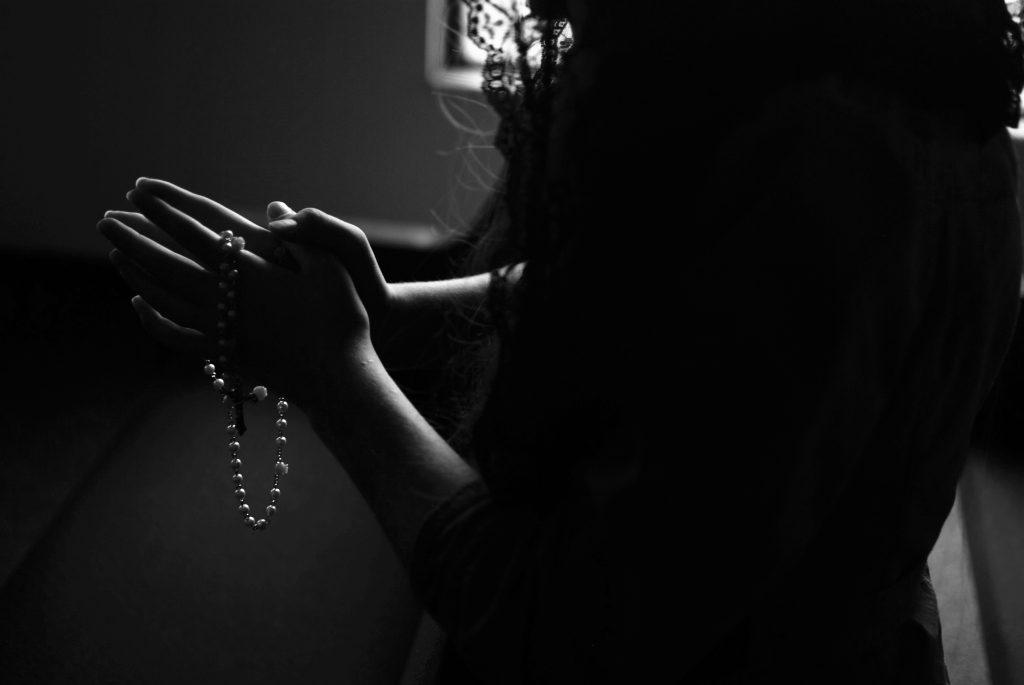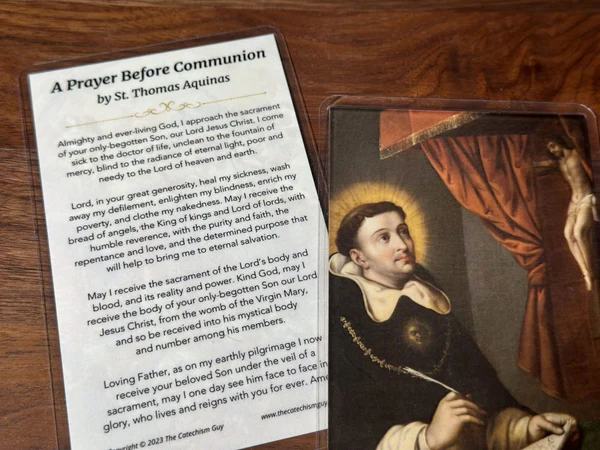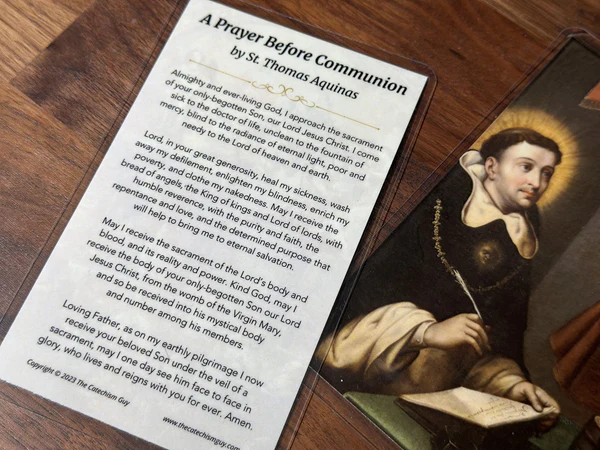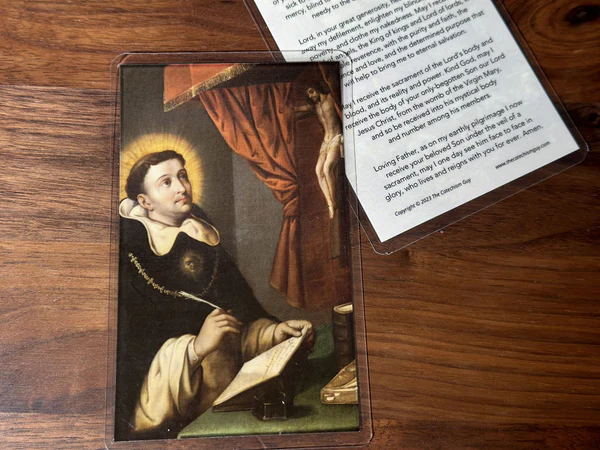In this guide, I will teach you how to pray the Sign of the Cross in Latin step-by-step.
Why I Started Praying the Sign of the Cross in Latin
Just a few weeks ago I was praying with my Daily Missal and came across the section of recommended daily prayers. Of course, the very first one was the Sign of the Cross. However, the section included not only the English version of the prayer but also the Latin.
And as I never learned growing up how to pray any of the basic prayers in Latin, I decided to give it a shot and even try memorizing it.
Now, ever since that day, I find myself making the Sign of the Cross and praying its words in Latin almost every time.
There’s something so beautiful and simple, yet profoundly sacred about saying the words in Latin rather than in English.
Praying the Sign of the Cross in Latin
While making the Sign of the Cross with your hand, the following Latin words are to be said:
In nómine Patris, et Fílii, et Spíritus Sancti. Amen.
In case you have absolutely no familiarity with Latin and want a word-by-word translation from the Latin to English:
Related Video: NEVER Make the Sign of the Cross the Same Way Again
How to Pronounce the Sign of the Cross in Latin
Click below to hear the Latin pronunciation of the Sign of the Cross or check out the phonetic spelling below and try for yourself:
Phonetic Spelling:
In no-mee-nay pah-trees et fee-lee-ee et spear-ee-toos sawnk-tee. Ah-men.

How to Make the Sign of the Cross
Step #1
With your right hand, touch your forehead and pray, “In nómine Patris”
Step #2
Touch the center of your chest and pray “et Fílii”
Step #3
Touch your left shoulder and pray “et Spíritus”
Step #4
Touch your right shoulder and pray, “Sancti. Amen.”

Also, though it is most common in the west to make the Sign of the Cross with an open hand, not many Catholics are aware of the more ancient posture, still common today in the east, of how to hold the right hand when making the Sign of the Cross.
It is traditional practice in the east to join the thumb, forefinger, and middle finger together, evoking the consubstantial and indivisible Trinity, while folding the ring finger and pinky against the palm of the hand, evoking the two natures — human and divine — of Christ.

Though, again, this is more common in the east… Catholics in the western Church can even benefit from adopting this practice that only deepens the rich symbol of the Sign of the Cross.
When to Make the Sign of the Cross
You can make the Sign of the Cross anytime throughout the day and anytime you feel led to do so, whether in Latin, English, or any other language. However, here are 5 situations in which you can try to make it a habit of making the Sign of the Cross:
1. Before starting your prayers
Invoking the name of God and reminding ourselves of the means of our salvation (the Cross) through a gesture at the beginning of prayer is a common practice of Catholics and an appropriate way for all Christians to begin their prayers.
2. When passing by a Catholic Church
Making the Sign of the Cross as you drive or walk by a Catholic Church is a physical and visible way of acknowledging the Eucharistic presence of our Lord in the tabernacle of every Catholic Church
3. When you hear a siren or see an accident
We aren’t fully aware of the power of our prayers for those we don’t know. However, as members of the Body of Christ, we are able to lift up anyone in prayer at any moment… even if we don’t know them personally. Making the Sign of the Cross as you hear an ambulance go by or as you drive by an accident on the road is a small way that we can pray for our brothers and sisters in Christ who are suffering.
4. When passing by a cemetery
Members of the Body of Christ are not separated by death and making the Sign of the Cross as we pass by a cemetery is a small way that we can pray for the dead and particularly the souls in Purgatory
5. At the beginning and end of mass
This shouldn’t be too hard to remember and practice, as the priest usually leads the congregation at both the beginning and end of the mass in doing so, but making the Sign of the Cross at mass is most fitting as the Eucharistic sacrifice is the center of the Catholic faith.

Why Use Latin When Praying the Sign of the Cross?
Catholics are by no means required to pray the Sign of the Cross in Latin. In fact, if one is more comfortable saying the words in their native tongue that is what they ought to do. However, there are some benefits to praying the Sign of the Cross in Latin over praying it in one’s native tongue.
1. It’s Ancient Tradition
Latin has been the liturgical language of the Western Church since the beginning of the Church and is the official language of the Catholic Church today. Whether you experience the liturgy yourself in Latin or not, using Latin in personal prayer connects one to the long tradition of the Church.
2. It’s Universal
Reclaiming the use of Latin in our prayer unites the Church together in a profound way. By starting small and praying even just the Sign of the Cross in Latin, Catholics across all cultures and languages can pray in a common tongue. Even if you don’t pray with others from different cultures, there is something special about knowing you’re praying in a language that is universal to the whole Church.
3. It’s Sacred
The language we speak every day in our common life is just that: common. When using a language in our prayer that we never use in ordinary situations, such as Latin, it makes our experience of prayer more sacred. In fact, that is what “sacred” means—something that is “holy” and “set apart”. Try praying the Sign of the Cross in Latin the next few times you pray and you will know what I’m talking about.
Further Reading
Here are just a few books to dive deeper into the meaning of the Sign of the Cross and praying in Latin:
How do you pray the Sign of the Cross?
Let me know below in the comment box!




